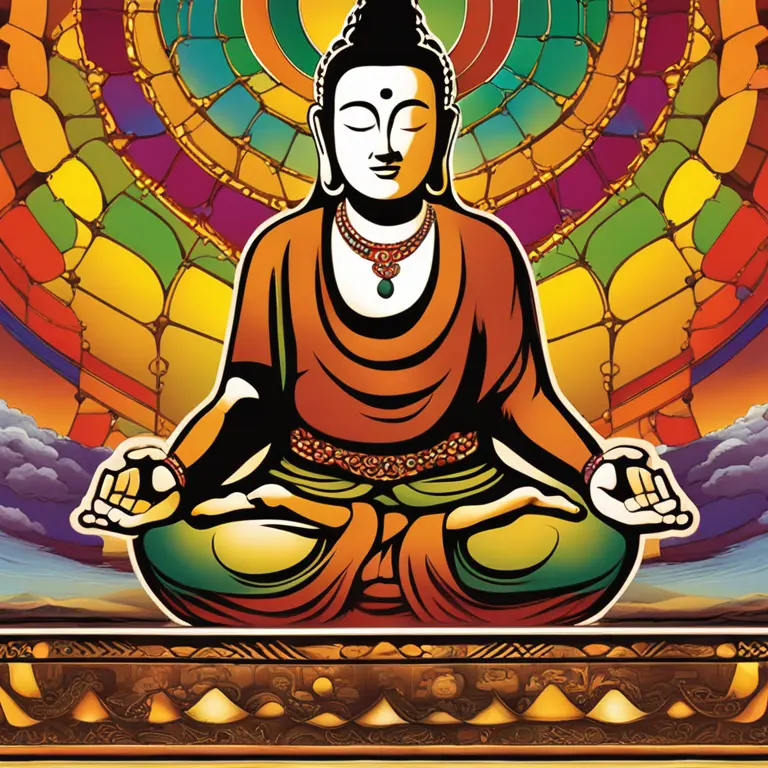
Meditation: Horizons Beyond Mindfulness
Meditate on the diverse landscapes that surpass the realm of mindfulness. This article delves into alternative meditation practices that go beyond traditional techniques.
article by Hina Kurosawa
Dimensions of Meditation
Meditation is often synonymous with mindfulness, but the practice extends into a range of dimensions that surpass the confines of this popular technique. As we advance into 2024, there's a growing recognition of alternative methods that offer distinct pathways to inner peace and spiritual growth. These diverse forms of meditation invite practitioners to explore the vast territories of their consciousness, often leading to transformative experiences and a deeper understanding of existence.

Engaging the Subconscious
Beyond the present-awareness focus of mindfulness, meditation can be a dialogue with the subconscious. Techniques such as transcendental meditation involve the repetition of mantras to settle the mind and tap into the wellspring of subconscious thought. In contrast to mindfulness’ observational stance, this immersive approach can facilitate a unique encounter with the deeper layers of the psyche, potentially unveiling insights and unleashing creativity.

Contemplative Traditions
The contemplative traditions of various cultures enrich the practice of meditation by incorporating prayer, chanting, and specific postural flows. These rituals engage the body and the mind in a rhythm that transcends regular meditation practices. For instance, the whirling of Sufi dances or the harmonic chanting in Gregorian practices encompass a spiritual dimension that anchors the meditator in a heritage that stretches back for centuries.

Visualization and Guided Journeys
Visualization and guided meditation are powerful tools that navigate beyond the borders of mindfulness. By envisioning vivid scenarios or embarking on mental journeys, practitioners can foster profound personal growth and healing. These techniques capitalize on the mind's capacity to conjure images and stories, often leading to a deep emotional release or an enhanced sense of well-being.

Meditation and The Natural World
Connecting with the natural world offers a meditation experience that mindfulness alone may not always reach. Practices like forest bathing or walking meditations in natural settings can evoke a sense of oneness with the environment around us. This kinship with nature can be profoundly grounding and has been shown to bear numerous health benefits, including stress reduction and improved cognitive function.
Energy-Focused Techniques
In meditation traditions such as Qigong and Kundalini yoga, the focus lies on the movement and cultivation of vital energy within the body. These practices often involve breath control, physical postures, and the visualization of energy flow. Such energy-focused meditations can lead to a sense of heightened awareness and invigoration that extends well into daily life.
Integrative Meditation
The future holds an integrative approach to meditation, one that blends various practices to suit individual needs. With a more holistic view, meditation becomes an adaptable tool for everyone. By combining aspects from different techniques, individuals can create a personalized meditation practice that addresses specific life challenges and caters to their unique path of spiritual development.
Published: 1/18/2024
Modified: 1/18/2024
More predictions
Come back here soon to learn more about yourself and your future


Mindfulness Meditation As A Tool for Anxiety Relief
Discover how mindfulness meditation can be a powerful tool for anxiety relief, fostering a sense of peace and well-being through simple, guided practices.


Mindfulness & Meditation: Enhancing Cognitive Flexibility
Discover how mindfulness meditation can foster cognitive flexibility, improving your ability to adapt to new situations and think creatively.


A Beginner's Guide to Mindful Meditation Explained
Discover the essentials of mindful meditation to start your journey towards inner peace and heightened awareness with this beginner-friendly guide.